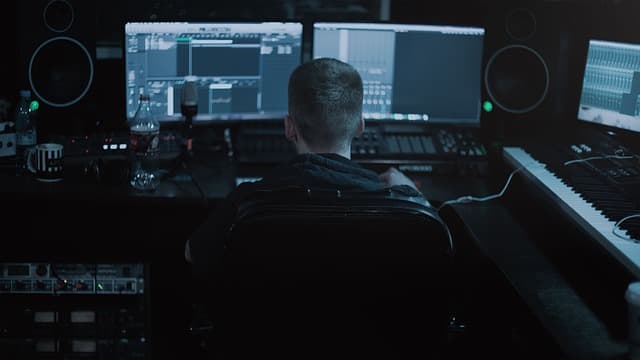
Reading articles about Photoshop, I’m often surprised at how many writers complicate essentially simple processing tasks. Many “monumental” writers, like Dan Margulies, suffer from this as well. But he can forgive that – his task is to write about all the subtleties and nuances of the processing process, to consider it from all angles and sides. Although it is this peculiarity of the presentation of material in his books that repulses many readers.
In fact, the roots of such methods of “sharpening in 40 actions” grow out of a very simple thing – the people who write these lessons have never worked with a large volume of photographs. That is, they usually have a couple of photos and are willing to kill an evening or two in processing them. But when you have regular orders and you have to process dozens of frames at each photo shoot, you start thinking about simpler and more convenient ways of processing.
About them we will talk today. I will tell you about five simple but very effective Photoshop tools that I use in my work all the time.
Before I process photos in Photoshop, I always work with the frames in the RAW converter first. That’s where I do the basic color correction and initial photo processing. In essence, I create the “skeleton” of the processing, and in Photoshop I work with the details of the photo.
So, we have worked with the photo in the RAW converter and open it in Photoshop. Photoshop welcomes us with a huge number of processing tools for all occasions. But we’ll talk about the simplest and most effective of them.
Dodge Tool/Burn Tool
The main function of the Dodge Tool/Burn Tool is to lighten/darken some parts of the image. In essence, you can paint over a darkened image or vice versa. It’s very simple, give it a try: I’m sure you’ll appreciate this tool. The Dodge/Burn Tool has only two, but very important settings.
Range – Select the range to apply
You can use this tool on dark (Shadows), light (Highlights) or neutral (Midtones) areas of the photo. For example, you need to lighten the dark areas of the chin (when processing a portrait), and leave the light areas untouched. In this case, we put the Shadows mode in the Dodge Tool, and it will lighten only the dark parts of the places on which we apply it.
Exposure – the strength of the effect
It is very important to set the exposure in the right way. A lot of people, when experimenting with Photoshop, try Dodge/Burn at 100%. And by darkening the image, they get black holes, and by lightening it, they get solid over highlights. Of course, when they get this result, they do not go back to this tool. But Dodge/Burn is a subtle tool. If you work with shadows and highlights, try 7-10%, if you work with neutrals, try 10-20%. The power is different for each case, but once you’ve worked with the tool for a while, you’ll get a feel for what kind of power you need in each particular case.
Dodge/Burn has a lot of uses:
Simply applying the Dodge Tool to the iris is the easiest way to lighten it. By doing so, you focus the viewer’s attention on the model’s eyes. Cheekbones, chin line, nose line, eyebrows – any facial lines, if you darken them a little, will gain more volume and contrast.
I use this technique with almost all of my male B/W portraits. It is not always a good technique for color, because it ruins the colors, but it works just fine in B/W.
If you are doing a portrait of a woman, use it very carefully, because the only way to enhance a woman is to accentuate the facial lines that make her look feminine. Otherwise you will get a portrait of a man-like creature.
Brighten up the backlighting areas
Backlighting on its own is a wonderful thing. But if you use the Dodge Tool to intensify it, it’s even better. It looks especially good in concert photos, when the musicians are nicely backlit.
Whiten the teeth of your models
The Dodge Tool is the easiest and most effective way to whiten the teeth in your photo.
Clone Stamp
Efficient photo editing in Photoshop
There are several tools in Photoshop for retouching images, and each of them is good in its own way. But “Stamp” is the most versatile tool to use.
Its function is to take a certain section of an image and copy it. By doing so, we can, for example, retouch wrinkles – simply by “replacing” them with areas of smooth skin. To do this, press Alt and select the area from which the picture will be taken, and then, just by clicking on the desired areas of the image, we will copy it to them.
In the stamp settings it is important to pay attention to two parameters:
Mode. These are the modes in which the stamp will work. For example, in the Darken mode, the stamp will “replace” only the lighter areas than the selected area. In fact, you can darken the lighter areas of the image, hence the name of the mode – Darken. And, accordingly, in Lighten mode, the stamp will only work on the darker areas of the image, brightening them.
Clone Stamp has many modes – experiment with them, I’m sure you will get interesting results.
Describing the work of each mode, in my opinion, makes no sense – in photoshop for all the tools are essentially the same principles of modes, just changing a little bit for the specifics of a particular tool.
Opacity
Opacity means opacity. Simply put, the less percentage you put in this setting, the more transparent the “work” of the stamp will be. For example, at 100% the stamp will completely replace the selected area, and at 50% it will be semi-transparent. For face retouching, as a rule, 10-30% is used, otherwise the stamp trace will be too clearly visible.
Retouch
Retouching in all its forms is the main purpose of the stamp. First of all, the stamp is used to retouch the skin – to remove wrinkles, bruises under the eyes, puffiness and other beautiful creations of Mother Nature.
You can also retouch, for example, an unwanted object in the frame. Unless, of course, it takes up half of the photo. It’s very handy to use the stamp to remove small over highlights. For example, your model has a small spot of overblow on the tip of his nose. We take the stamp, set the Darken mode and darken this spot in a couple of clicks.
History Brush
The History Brush is a time machine for processing photos. You can take any processing stage and brush it on your image.
Black&White
The Black&White tool is in the Image->Adjustments tab. Or you can simply create an Adjustment layer on the photo.
The main function of the Black&White tool is to “correctly” convert a color image to B/W. Correct because you can change the black and white representation of each color. That way you can get a nice and “tasty” B/W picture.
But the B&W functionality does not stop here. You can use this tool to get a very interesting and colorful picture. There are a lot of ways of using B&W both for working with color and for B&W processing.
Shadow/Highlights
Shadow/Highlights are also found in the Image->Adjustments tab (there are a lot of interesting tools there by the way, I suggest you experiment with them all)
This tool is designed to dim over-lit areas and pull light out of shadows. Besides the most obvious application – removing the highlight and shadow, S/H also works great for creating a sense of greater depth to the picture. We can add dark halftones to the light areas, and light ones to the dark areas. That way, the picture will become more three-dimensional and deep.
In fact, Shadow/Highlights are an absolutely indispensable tool for any serious processing. Almost any photo can be made better if you apply S/H properly.
I want to talk about all the S/H settings and its functionality, but that’s really a topic for a separate article. For now, just experiment – try different settings and see the results. In my experience, this is the most efficient way of learning new things.
As we can see, all of these tools are very easy to use, but they’re also incredibly effective. Try experimenting with them and you’ll get a feel for the possibilities they offer in processing.


